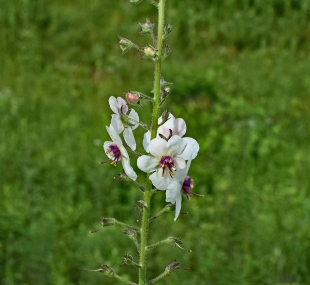How to recognize it ?
Marshmallow is a plant with the Latin name Althaea officinalis. It is also called white mallow and wild marshmallow.

Marshmallow is a perennial plant that can grow up to 1 meter (40 inches) tall and grows easily in full sun. Marshmallow grows in rich soils that remain deeply moist in summer. Its leaves are evergreen with a toothed edge. They are white and hairy and soft to the touch. The flowers are white and appear around July. The root of the marshmallow is white, long and thick.
Harvested parts : leaves, flowers and roots
How to grow it ?
- Shelf life of the seeds : approximately 5 years;
- Planting : in spring;
- Sowing : in the fall;
- Emergence : in the spring following sowing;
- Distance between plants : about 60 centimetres (24 inches);
- Maintenance : cut back to 3 cm at the base in early spring;
- Multiplication : stump cuttings taken in the fall, stored in a box in sand during winter and planted in spring;
- Soil : deep, light and cool;
- Compost requirements : at planting;
- Mulching : in summer and winter;
- Water requirements : regular, more sustained in dry weather.
How to harvest it ?

The whole plant can be used. Flowers and leaves can be harvested together or separately in summer. They are preserved dry to prepare infusions. The root is collected in autumn with the death of the stems.
The medicinal virtues
Marshmallow is used especially in inflammations and irritations :
- it allows to simulate the immune system;
- in syrup, it is a powerful laxative which allows the drainage of the intestines gently;
- expectorant, it acts against the dry and irritating cough, in asthma, bronchitis, laryngitis and tracheitis;
- Protective of the digestive mucous membrane, it can be used in the inflammatory disorders of the digestive tract (gastritis, gastroduodenal ulcers, colitis and diverticulitis);
- it allows to limit the inflammation of the skin and to accelerate the cicatrization (abscess, acne, small cut);
- a stick of marshmallow root given to teething babies calms gum inflammation and facilitates bowel movements.
Updated on 10 February 2023 at 17:42







